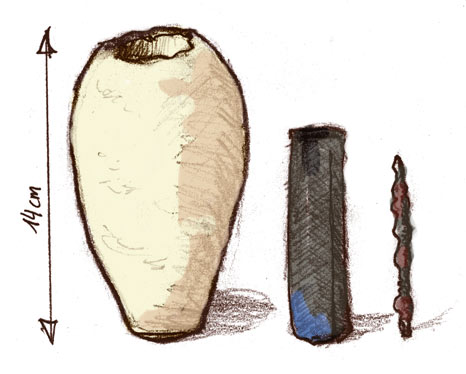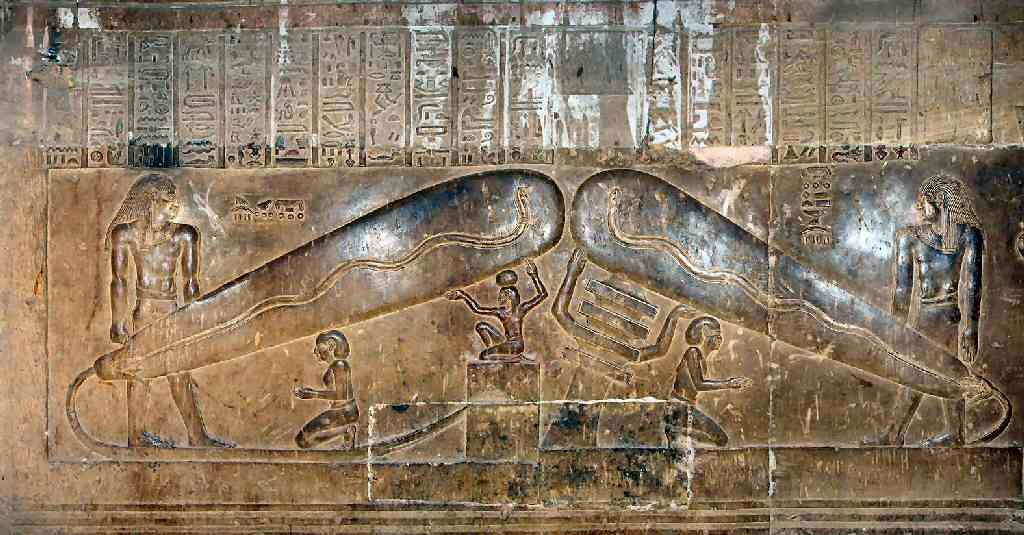Historical Anachronisms: Exploring the Technological Mysteries of Ancient Civilizations
Historical anachronisms represent one of the most fascinating and controversial fields of history. These phenomena, which seem to defy the chronology and technological knowledge of the eras in which they were found, raise intriguing questions about the capabilities and sophistication of ancient civilizations. In this article, we will explore some of the most notable anachronisms, discuss their implications, and consider possible explanations.
The Antikythera Mechanism (Greece)
Description: An ancient analog "computer" used to calculate and predict astronomical movements and calendar cycles.
Anachronism: Its sophistication relative to the known technologies of the era (around 100 BC) has raised doubts about the scientific capabilities of ancient Greece. This device, discovered in 1900, is an extraordinary example of advanced mechanical engineering that anticipated astronomical and mathematical knowledge by centuries.
Possible Explanation: Some scholars suggest that the Antikythera Mechanism could be the result of a combination of knowledge accumulated over centuries, rather than an isolated invention. Ancient Greece was a crossroads of cultures and knowledge, which could explain the device's sophistication.Depictions of Aircraft and Flying Vehicles in Ancient Egypt
Description: Reliefs and paintings in Egyptian tombs and temples, such as those found in the tomb of Seti I, which seem to show objects resembling modern aircraft or UFOs.
Anachronism: These images have been interpreted by some as evidence of advanced technologies, but historians tend to consider them symbolic or metaphorical. However, their resemblance to modern flying objects continues to spark curiosity and debate.
Possible Explanation: Egyptologists suggest that these depictions could be artistic interpretations of natural or religious phenomena. Egyptian symbolism is rich in metaphors and allegories, and these images could be part of a complex visual language.The Baghdad Battery (Mesopotamia)
Description: An ancient device, dating back about 2,000 years, that could have functioned as a type of galvanic battery.
Anachronism: Its existence suggests a knowledge of electromagnetism far beyond the technological capabilities of the era. This object, discovered in 1936, has led to the hypothesis that the ancients might have had a much more advanced understanding of electricity than previously thought.
Possible Explanation: Some researchers hypothesize that the Baghdad Battery could have been used for galvanoplasty, a process of metal plating. This limited use could explain its existence without necessarily implying an advanced understanding of electricity.
Source - Wikipedia
The Aeolipile of Heron of Alexandria (Greece)
Description: A steam-powered rotating device considered the precursor to the steam engine.
Anachronism: Although Heron of Alexandria designed this machine in the 1st century AD, steam technology was not used industrially until the 18th century, creating a temporal gap that has raised questions about its purpose and application.
Possible Explanation: The Aeolipile could have been a scientific toy or demonstration device rather than a practical invention. The lack of industrial applications could be due to the absence of adequate infrastructure and materials in antiquity.Mayan Calculators (Mesoamerica)
Description: Objects and tools such as Mayan astronomical codices and the so-called "Copán disc," which seem to indicate an advanced knowledge of the stars and temporal cycles.
Anachronism: The precision of Mayan astronomical calculations, which reevaluates their sophistication compared to other contemporary civilizations, is often seen as an "anachronism" relative to the technological means of the era.
Possible Explanation: The Maya had a highly developed culture with a strong emphasis on astronomical observation. Their precision could be the result of centuries of meticulous observations and recordings, rather than advanced technologies.The Egyptian "Iron Men"
Description: Reliefs of small humanoid figures that seem to have metallic characteristics or "futuristic" features.
Anachronism: The images seem to show figures with metallic bodies or armor resembling modern technological equipment. Some believe these to be ancient astronauts or deities linked to advanced technologies.
Possible Explanation: These reliefs could represent deities or protective spirits, with the armor symbolizing power and protection. Egyptian symbolism is often complex and multilayered, and these figures could be part of a broader system of beliefs.Viking Shipwrecks (Northern Europe)
Description: Some archaeological excavations have uncovered Viking ships with characteristics that seem to deviate from the traditional shipbuilding techniques of the era.
Anachronism: The advanced navigation and shipbuilding techniques of the Vikings suggest engineering knowledge that, for some, seems too advanced for their contemporaries.
Possible Explanation: The Vikings were expert explorers and traders with a strong tradition of shipbuilding. Their advanced techniques could be the result of centuries of experience and innovation, rather than anachronistic knowledge.The Colossal Olmec Statue (Mesoamerica)
Description: The enormous stone heads carved by the Olmecs (around 1000 BC) seem to possess facial features that some interpret as resembling those of Africans or even "astronauts."
Anachronism: The heads, so large and detailed, have been the subject of speculation, with some theories suggesting contacts with other advanced civilizations.
Possible Explanation: The Olmecs might have had commercial or cultural contacts with other civilizations, which could explain the facial similarities. Additionally, the colossal heads could represent figures of power or deities, with stylized features reflecting their beliefs.The Piri Reis Map (Turkey)
Description: A 16th-century nautical map that seems to show Antarctica without ice, an idea that would not have been possible in 1513.
Anachronism: The accurate representation of the Antarctic coast, which was discovered only in the 20th century, has sparked many alternative theories and conjectures about previous technologies and knowledge.
Possible Explanation: The Piri Reis Map could be based on older maps, now lost, that contained advanced geographical information. Additionally, some features of the map could be artistic interpretations or copying errors.The Dighton Rock Inscriptions (North America)
Description: Inscriptions found on boulders in New England, which seem to contain unrecognized symbols, some of which resemble Egyptian or even Sumerian writing.
Anachronism: These symbols have fueled theories suggesting pre-Columbian contacts between the ancient Egyptian civilization and the inhabitants of North America.
Possible Explanation: The Dighton Rock inscriptions could be the result of contacts between different Native American cultures, or they could represent religious or ceremonial symbols. The similarity to other ancient writings could be coincidental or interpretative.
Source - Wikipedia
The Ica Stones (Peru)
Description: Carved stones that show images of dinosaurs and prehistoric humans interacting with each other.
Anachronism: Although considered a hoax by many experts, the Ica Stones are a subject of discussion due to their depictions that seem "impossible" according to known evolutionary chronology.
Possible Explanation: The Ica Stones could be modern fakes, created to deceive or for commercial purposes. However, some could be authentic and represent local myths or legends rather than actual historical events.Source - Wikipedia
Images of "War Machines" in Babylonian Reliefs
Description: Some Babylonian bas-reliefs seem to depict "war chariots" and other machines that appear too sophisticated for the era in which they were created.
Anachronism: The depicted military technologies seem too advanced for Babylonian knowledge. Some suggest these could be later influences or interpretive errors.
Possible Explanation: The Babylonian bas-reliefs could represent stylized or idealized war machines rather than real technologies. Additionally, they could be the result of cultural or artistic influences from other civilizations.Astronauts in Hindu History (India)
Description: In sacred texts like the Mahabharata, "flying vehicles" called "Vimanas" are described, which seem more like modern space shuttles than terrestrial means of transport.
Anachronism: The descriptions of Vimanas and other advanced technologies in the Mahabharata and other sacred texts are often interpreted as anachronisms, raising questions about how these stories originated.
Possible Explanation: Indian sacred texts could contain metaphors and allegories that reflect religious and mythological beliefs, rather than literal descriptions of advanced technologies. The stories of Vimanas could be poetic interpretations of natural or spiritual phenomena.The Dendera Lamps (Egypt)
Description: Reliefs found in the Temple of Hathor at Dendera, which seem to depict objects resembling electric lamps or advanced lighting devices.
Anachronism: The resemblance to modern technologies has raised questions about the possibility that the ancient Egyptians had advanced knowledge of electricity.
Possible Explanation: Egyptologists suggest that these reliefs could represent religious or ritual symbols rather than real technologies. Egyptian symbolism is often complex and multilayered, and these images could be part of a complex visual language that reflects religious beliefs and practices.
Source - artarch.dalatcamping.net
Historical anachronisms offer us a fascinating window into the capabilities and knowledge of ancient civilizations. These examples demonstrate how, at times, technologies and ideas can be far more advanced than we think. Continuing to study and interpret these phenomena can help us better understand the past and reevaluate our current knowledge. However, it is important to consider all possible explanations, including those that account for the cultural, artistic, and symbolic context of ancient civilizations.








Leave a Comment